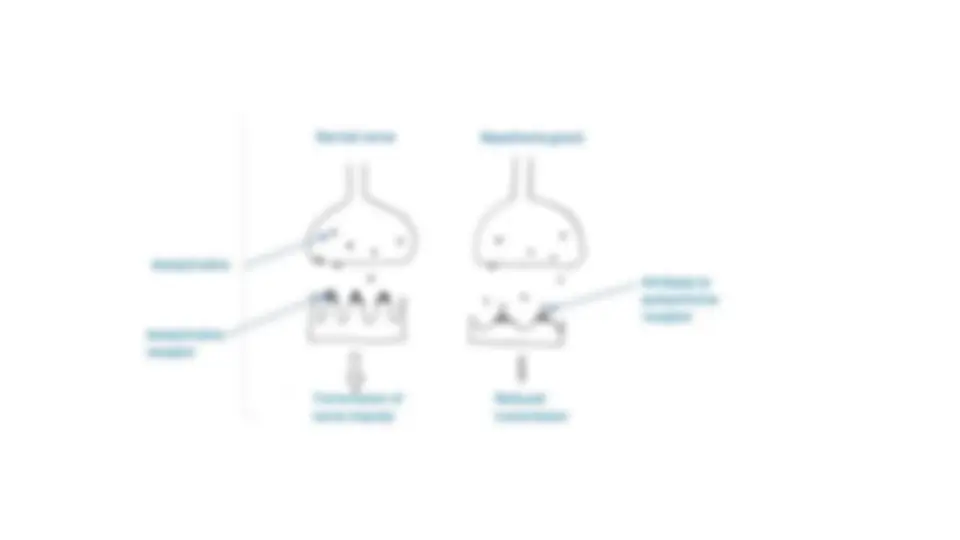






























































































Study with the several resources on Docsity

Earn points by helping other students or get them with a premium plan


Prepare for your exams
Study with the several resources on Docsity

Earn points to download
Earn points by helping other students or get them with a premium plan
Community
Ask the community for help and clear up your study doubts
Discover the best universities in your country according to Docsity users
Free resources
Download our free guides on studying techniques, anxiety management strategies, and thesis advice from Docsity tutors
Patho physiology weekly notes for each class taken. You can check the details
Typology: Lecture notes
1 / 147

This page cannot be seen from the preview
Don't miss anything!





























































































1. Defined as an acute (sudden onset), rapidly progressing
inflammation of peripheral motor and sensory nerves
a. Variable motor weakness and paralysis
b. Paralysis that ascends symmetrically from lower
extremities in most cases
c. With excellent care has a 96% complete recovery
in both genders
-autoimmune attack
-common after viral infections
-Immunizations
-febrile illness
-injury, or surgery
immunization
from causing harm, the antibody formed has a damaging effect on
peripheral nerve myelin; an IgM antimyelin antibody exists,
lymphocytes are sensitized and aid in damaging myelin
Nerve and damaged myelin sheath
The demyelinating form of Guillain-Barre syndrome destroys the protective covering
f the peripheral nerves (myelin sheath), preventing the nerves from transmitting signals to the brain
progressing upward from lower extremities to total
paralysis requiring ventilatory support
aches, cramping, and nighttime pain
dyspnea, diminished vital capacity,
breath sounds,
decreasing O2 saturation,
abnormal blood gases;
-Orthostatic hypotension (lowered BP and dizziness with
sudden position changes)
-Hypertension
-Change in heart rate (bradycardia, heart block, asystole or
tachycardia),
-Bowel and bladder dysfunction
-Flushing and diaphoresis
(“grave muscle weakness”)
https://www.youtube.com/watch?v=np6g2mwHKcw
Myasthenia gravis (MG), which literally means “grave muscle weakness,” is an autoimmune neuromuscular disease.
● In myasthenia gravis, the immune system mistakenly attacks the acetylcholine receptors (AChRs) at the neuromuscular junction. The neuromuscular junction is the site where nerve impulses are transmitted from motor neurons to muscle fibers. Acetylcholine (ACh) is the neurotransmitter that binds to AChRs on the muscle side of the junction, triggering muscle contraction. ● When autoantibodies against AChRs are present, they block, damage, or destroy these receptors. As a result, the number of functional AChRs is reduced, and the transmission of nerve impulses from the nerve to the muscle is impaired, leading to muscle weakness.
● Ocular Symptoms: Ptosis (drooping of the upper eyelid) and diplopia (double vision) are the initial and common manifestations. ● Facial and Bulbar Muscles: Weakness of the facial muscles can cause a mask-like appearance, difficulty in smiling, and problems with chewing and swallowing. Weakness of the muscles involved in speech can lead to dysarthria (slurred speech).
● Respiratory Muscles: In severe cases, weakness of the respiratory muscles (such as the diaphragm and intercostal muscles) can lead to respiratory distress or failure, which is a life-threatening complication known as myasthenic crisis. ● Limb Muscles: Proximal muscle weakness, especially in the arms and legs, is also common. The weakness typically worsens with repetitive use of the muscles and improves with rest.
● Clinical Evaluation: A detailed medical history and physical examination, focusing on the characteristic pattern of muscle weakness that worsens with activity and improves with rest, are important. ● Blood Tests: Detection of autoantibodies against AChRs, MuSK, or LRP4 in the blood can confirm the diagnosis. However, in some cases, patients may be seronegative (i.e., no detectable antibodies). ● Edrophonium Test: Also known as the Tensilon test, edrophonium is a short-acting acetylcholinesterase inhibitor. When injected intravenously, it temporarily blocks the breakdown of ACh. ● Electromyography (EMG): Repetitive nerve stimulation studies can show a decremental response in muscle action potential amplitude with repeated stimulation, which is characteristic of MG.
rest; eventually leads to fatigue without relief from rest
exacerbations
with onset usually between ages 20-30 years